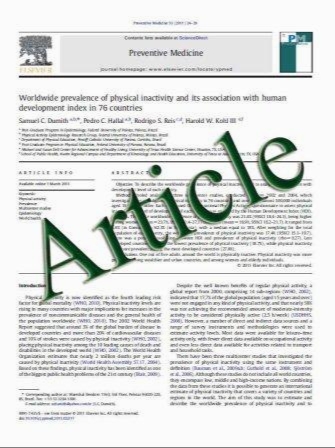Extension and flexion torque variability in ACL deficiency
- نوع فایل : کتاب
- زبان : انگلیسی
- مؤلف : Albertas Skurvydas • Nerijus Masiulis • Rimtautas Gudas • Gintar_e Dargevic،iu— t _e • Dovil_e Parulyt _e • Vytenis Trumpickas • Jonas Romas Kalesinsk
- چاپ و سال / کشور: 2011
Description
Purpose To evaluate possible differences in knee extension and flexion torque variability in the anterior cruciate ligament—deficient (ACLD) leg and their dependence on muscle length and visual feedback (VF). Although a knee extension torque deficit is found in the ACLD leg, there is no evidence that variability in submaximal isometric knee extension and flexion torque is affected in the ACLD leg or that it depends on VF. Methods All tests were performed using 13 untrained men with unilateral ACL rupture. Isometric knee extension torques at 90o and 120o and knee flexion torques at 90o, 120o and 140o were evaluated in healthy and ACLD legs. Isometric torque variability at 20% of maximal force was evaluated with or without VF. The coefficients of variation (CV) and permutation entropies (PE) were used to calculate submaximal isometric torque variability. Results Healthy legs had significantly greater isometric torques at 90o and 120o knee angles during knee extension compared with ACLD legs. There were no differences between healthy and ACLD legs in torque variability in knee extension and flexion with or without VF. The PE of knee extension torque at knee angles of 90o and 120o was significantly (P\0.05) greater in healthy legs. Conclusions The effect of ACL deficiency on variability (CV) in submaximal isometric knee extension and flexion torque was not significant. However, PE of knee extension submaximal torque was significantly greater in the healthy leg than in the ACLD leg. When estimating ACL deficit, it is important to measure not only isometric maximal torque but also torque variability and complexity using nonlinear tool during submaximal isometric tasks. Level of evidence III.
Knee Surg Sports Traumatol Arthrosc (2011) 19:1307–1313 DOI 10.1007/s00167-011-1425-0 Received: 30 August 2010 / Accepted: 27 January 2011 / Published online: 8 February 2011


